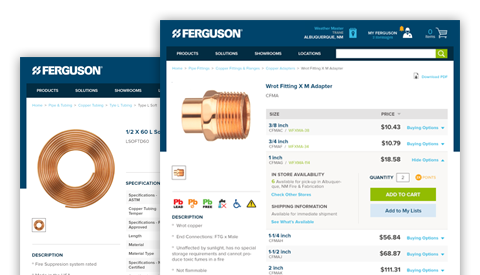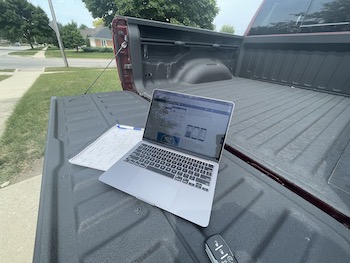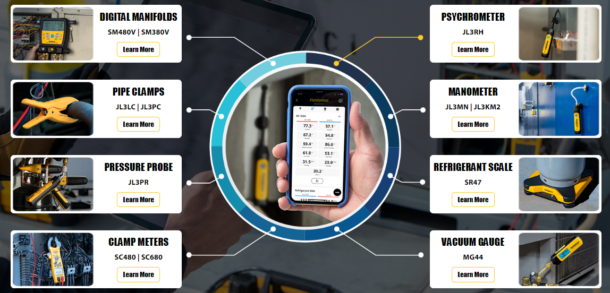If you’re a small business looking to dominate search engines, it takes more than high-quality content and a solid page-load speed. You also need a robust off-page SEO strategy. Off-page SEO is all the things you do to improve your search engine optimization outside of your website. It includes activities like guest blogging, social media Read more
Industry Blogs

If you’re a small business looking to dominate search engines, it takes more than high-quality content and a solid page-load speed. You also need a robust off-page SEO strategy.
Off-page SEO is all the things you do to improve your search engine optimization outside of your website. It includes activities like guest blogging, social media engagement, and forum participation.
Here are the top 9 most effective off page seo strategies that can help you build your organic search traffic.
1. Guest Posting
While content marketing is an essential off-page SEO strategy, you need to look beyond your website to build brand awareness and generate new leads. Influencers have a large and engaged audience, so they can help you get in front of potential customers and increase your reach.
Guest posting is a solid strategy to help market and advertise your plumbing business. It is a powerful off-page SEO strategy that can help you build backlinks and boost your rankings. However, you must ensure that the blog you are writing for has a high domain authority (DA).
To do this you can do the following:
- Go to a backlink analysis tool
- Download your competitor’s backlinks
- Reach out to all the websites and offer to write content for their website
2. Social Media Engagement
While building backlinks is a top off-page SEO strategy, it’s also important to build your brand’s reputation on other sites. This includes social media platforms like Reddit and Quora, as well as reputable news sources that publish unlinked brand mentions.
Search engines use these off-page signals to evaluate a page’s quality and its E-A-T (Expertise, Authority, and Trustworthiness). Those that are more reputable tend to rank higher on SERPs.
3. Social Bookmarking
One of the best ways to generate off-site SEO is through social media engagement. By creating compelling content that people will talk about, you can create a buzz and get a lot of back links.
By using these off-page SEO tactics, you can improve your search engine ranking and build a strong brand. These strategies also help to drive more traffic and increase your domain authority. They are a must for any business in the digital world.
4. Forum Submissions
Forum submission is a great way to build brand awareness and drive traffic to your website. Participate in forums that are related to your business and industry, and answer people’s questions. However, avoid spamming as it might get you banned from the site.
Only use high quality forum submission sites. Also, make sure your answers are relevant to the question. Otherwise, search engines will consider your comments spam.
5. Blog Commenting
Blog commenting is an easy way to drive traffic to your website and build backlinks. However, make sure that you comment on relevant blogs and not spammy ones.
If you want to own organic search, you need an ironclad off-page SEO strategy. You can’t rely on your brand name or a big Moz domain authority to rank you above the competition. You need to focus on intent-aligned, full-funnel content and an off-page strategy that’s built on quality links and trust.
6. Infographics
Infographics are a great way to promote your content online. They’re eye-catching, shareable and if optimized properly, can also increase your search traffic.
While backlinks are the most important off-page SEO signal, it’s important to note that Google also uses other off-site signals when assessing websites. These include things like brand mentions (your website or brand name mentioned on another site without a link), social media engagement, and more.
Related: How to Take Your Plumbing Business Online
7. Videos
Videos are a great way to increase brand awareness, drive traffic and boost sales. They are also an excellent way to improve user experience.
Video marketing should be a part of every business’s digital strategy. Use video content that demonstrates real value. For example, this product video by luggage brand Lo & Sons focuses on showing potential customers the impact the company’s products have made in their own lives.
8. Social Networking
Embedding infographics on sites like Reddit and Quora are a great way to grow your brand, build relationships and trust, as well as generate backlinks. This off-page SEO strategy is a bit time consuming, but can be incredibly rewarding when done correctly.
Off-page SEO covers everything outside of your website that can improve search engine optimization, including link building, guest posting and social media marketing. It is important to understand off-page SEO because it helps search engines perceive your site as authoritative and trustworthy.
9. Link Insertions
Getting link insertions can be complex but very much worth the effort. When other websites with high domain authority link back to you, it signals to search engines that your website is a trusted source of information on a topic. This translates into higher rankings.
This is one of the most time consuming off-page SEO strategies, but it can yield incredible results. Simply reach out to websites that have broken links and ask them to swap it for a link to your website.
Author: Roger Avila is an SEO manager at JetRank, an SEO company based out of San Diego, CA. When not working he’s either playing soccer, at the gym or hanging out with the family. Working hard is good but you need to enjoy life too, right?

In today’s fast-paced world, leveraging the power of online resources is essential for the success of any plumbing contractor. Ferguson.com is that resource. As a busy service contractor, time is of the essence. When I plan out my busy week schedule, resource efficiencies are at a premium, and that includes stocking my truck adequately. Moreover Read more
In today’s fast-paced world, leveraging the power of online resources is essential for the success of any plumbing contractor. Ferguson.com is that resource.
As a busy service contractor, time is of the essence. When I plan out my busy week schedule, resource efficiencies are at a premium, and that includes stocking my truck adequately. Moreover, running a successful plumbing business requires access to quality products, reliable suppliers, and expert advice. In today’s digital age, having a robust online platform can significantly streamline your operations and contribute to your business’s growth.
In today’s post-COVID world, especially dealing with disruptive supply chain issues, it almost goes without saying; you can never have too much inventory on the truck or back at the shop. That’s why I rely on Ferguson.com, a comprehensive website that has plumbing contractor-specific resources available, all of which are literally just a click away. And that click provides real-time stock and pricing of more than 200,000 HVAC and plumbing products; I can see what’s in stock and my contract pricing.

My plumbing business relies on my wholesaler to carry a vast range of top-quality products from leading brands, and I trust Ferguson to provide those trusted, reliable, and durable solutions. Whether I’m looking for pipes, fittings, valves, fixtures, boiler parts or specialty items, I look to Ferguson.com.
Some really helpful features include “My Lists.” I am able to customize the order process with just a few clicks, instead of individually searching for the products I purchase regularly and organizing lists of the products I want. This ultimately has saved me time and has helped to streamline my ordering process. Ferguson.com even gives me the ability to share those lists I’ve created and keeps products I purchase under the “Bought Often” tab, which is automatically updated monthly.

The Quick Tools feature is a shortcut that makes it easy for trade professionals to quickly access other popular site features. It gives me the quick ability to order, reorder, find an order, or turn existing quotes into orders, all in one place. In some cases, I can even order online and have the order ready in an hour with Pro Pick-Up 1 Hour (at locations where Pro Pick-Up 1 Hour is available).
While traditional brick-and-mortar purchasing is still a viable wholesale solution, with Ferguson.com, I can gain access to a seamless and convenient online ordering system. This allows me to browse through products, check availability, compare prices, and place orders anytime, from anywhere. By simplifying the procurement process, Ferguson.com saves valuable time and effort, enabling me to focus on serving my customers better.
 Furthermore, as a plumbing contractor, staying up to date with the latest industry trends and techniques is crucial. Ferguson.com offers a wealth of resources and expert advice to help me stay ahead of the curve. From informative articles and how-to guides to videos and product demonstrations, the website serves as a knowledge hub for plumbing professionals. Leveraging this wealth of information can enhance one’s expertise, expand a skill set, and ultimately elevate one’s business.
Furthermore, as a plumbing contractor, staying up to date with the latest industry trends and techniques is crucial. Ferguson.com offers a wealth of resources and expert advice to help me stay ahead of the curve. From informative articles and how-to guides to videos and product demonstrations, the website serves as a knowledge hub for plumbing professionals. Leveraging this wealth of information can enhance one’s expertise, expand a skill set, and ultimately elevate one’s business.
Sometimes I need to know what was on an order or the last time I bought a certain product. I’m able to find all of that online and end any confusion about my orders. If I need to see the status of an order, I can see it on my Ferguson Dashboard or Orders, and even get the proof of delivery. (Proof of delivery may not be available depending on how the order shipped or if it was signed for.)
Forward Thinking
Ferguson understands the importance of competitive pricing for plumbing contractors. By signing up for a Ferguson.com account, one can unlock access to exclusive contractor pricing on a wide range of products. This ensures that I can offer my customers competitive rates while maintaining healthy profit margins for my business. The savings one can achieve through Ferguson.com can significantly impact your bottom line and give you a competitive edge in the market.
It’s pretty simple, really. Creating an account on Ferguson.com provides plumbing contractors with a range of powerful tools to manage their business efficiently. By logging in, one can track his or her order history, access invoices, and manage one’s account settings, all in one centralized location. This streamlined account management feature eliminates the need for tedious paperwork and enables one to stay organized and in control.

What’s also cool about the site is that I can enroll for the free PRO Plus™ program. After I enrolled in this program, I now earn one point for every dollar I spent online. I can then redeem those points for cool prizes and earn Bonus Points faster by purchasing featured products. PRO Plus™ customers are also eligible for discounts with select businesses.
Ferguson.com boasts an extensive inventory of plumbing products, tools, and supplies, as well as expert advice and efficient account management, making it a one-stop solution for all of my business needs. By utilizing the features and capabilities of Ferguson.com, I can streamline my operations, relieve operational stress, and propel my business toward greater success. Sign up today and unlock a world of opportunities for your plumbing contracting business with Ferguson.com.

Propane offers flexibility and compliments finishes that go into any project By Bryan Cordill Over the last few years, homeowners have found a new appreciation for outdoor living. They are looking for outdoor living spaces that are an extension of indoor ones, and propane is an environmentally friendly and sustainable way to make that happen Read more
Propane offers flexibility and compliments finishes that go into any project
By Bryan Cordill
Over the last few years, homeowners have found a new appreciation for outdoor living. They are looking for outdoor living spaces that are an extension of indoor ones, and propane is an environmentally friendly and sustainable way to make that happen.
Professionals like Anthony Carrino—a designer, developer, and contractor with more than 20 years of experience in the industry—agree that using propane is an excellent solution to be environmentally conscious while meeting their customers’ needs for enhanced outdoor living spaces.

Propane helps homeowners reduce their carbon footprint
Prioritizing environmentally-friendly appliances in outdoor living projects is increasingly important to both consumers and construction professionals looking to reduce their carbon footprint—and one of the best ways to do that is by using clean energy sources, like propane. Outdoor amenities powered by propane give construction professionals the flexibility to add these options to any project—without sacrificing style and design.
Due to its lower carbon make up, propane significantly reduces the amount of greenhouse gases released into the atmosphere, helping combat climate change and improving the air quality in and around the home. Propane outdoor fireplaces and fire pits emit less soot and particulate matter compared with wood-burning options that release smoke and toxins into the air. In fact, jurisdictions in some parts of the country restrict the use of traditional wood-burning fireplaces and fire pits during certain times of the year due to their detrimental impact on air quality and respiratory health. Compared with charcoal, propane grills not only heat food faster, but produce fewer carbon dioxide emissions. According to a 2009 study in the Environmental Impact Assessment Review, the carbon dioxide equivalent for charcoal grilling is almost three times more than that for propane grilling.
Outdoor propane appliances can be used at any time
In addition to its environmental benefits, propane-powered appliances can extend the coziness of a homeowner’s backyard space throughout every season. Patio heaters add comfort on chilly nights by raising the nearby outdoor temperature by up to 25 degrees Fahrenheit and can operate on a portable cylinder, or permanently connected to the homes propane system. . When asked how propane appliances can enhance a home build or remodel, Carrino said, “Propane appliances can help increase usability of a homeowner’s outdoor space, enabling them to enjoy it year-round.”
There’s no need to sacrifice style
Homeowners want outdoor appliances that reflect their home’s style and aesthetic, too. Luckily, propane offers a wide variety of products, designs, features, and sizes from top manufacturers to match homeowners’ varying tastes, budgets, and style preferences—making it the perfect fit for any project.
As the number of environmentally conscious homeowners continues to grow, it’s important for contractors, builders, and remodelers to be well-versed in the clean energy options available to give your customers the backyard of their dreams. Visit Propane.com/Propane-Products/Outdoor-Living to learn more about the benefits of propane.
 Bryan Cordill is the director of residential business development at the Propane Education & Research Council. He can be reached at bryan.cordill@propane.com.
Bryan Cordill is the director of residential business development at the Propane Education & Research Council. He can be reached at bryan.cordill@propane.com.

By Bryan Cordill Buildings—including homes—are a significant source of greenhouse gas emissions. In fact, homes account for nearly 40 percent of carbon pollution in the United States, according to the U.S. Green Building Council. Builders and contractors have several options available to them to lower the carbon footprint of the homes they build. Not only Read more
By Bryan Cordill
Buildings—including homes—are a significant source of greenhouse gas emissions. In fact, homes account for nearly 40 percent of carbon pollution in the United States, according to the U.S. Green Building Council. Builders and contractors have several options available to them to lower the carbon footprint of the homes they build. Not only in the embodied carbon of the building, but also in the operating emissions of the home over its lifetime.
The Propane Education & Research Council (PERC) understands the need and desire for builders to do their part in the homes they build. Its Propane Construction Incentive Program encourages more builders and remodelers to incorporate clean, reliable propane into their projects. The program awards qualifying and selected construction professionals a monetary incentive for building or remodeling homes using propane appliances in exchange for sharing emissions data and insights regarding their propane use at each home.
Todd Fitzgerald is a builder and owner of Father & Son Construction in New Hampshire. He’s been building homes for 30 years and has participated in the Propane Construction Incentive Program since 2018.
“Building and living in a sustainable home is growing more and more important to my customers, so that makes it part of my job, Fitzgerald said. “When we’re out building and we can use propane, especially through this program, we do it.”
Builders across the country are participating in the Incentive Program and seeing the environmental benefits of using propane in the homes they build. In 2022, the program resulted in the elimination of more than 18 million pounds of carbon dioxide equivalent (CO2e) per year in more than 1,000 homes across 19 states compared to building the same homes all electric.
Eliminating over 18 million pounds of CO2e is a huge win for the planet. It’s equivalent to eliminating greenhouse gas emissions annually from:
- 1,839 gasoline-powered passenger vehicles driven for one year.
- 1,038,249,446 smartphones charged.
- 1,075 homes’ energy use for one year.
Many people mistakenly believe an all-electric home is the only way to reduce or eliminate carbon emissions. But this data shows that pure electrification is not the answer, instead builders need to consider a strong energy mix in the homes they build, and that energy mix should include propane.
It will take decades and cost trillions of dollars to expand the country’s electric grid to service an all-electric housing stock. Not to mention, much of the U.S. grid electricity is produced by burning natural gas or coal. Propane is an immediate solution to accelerate decarbonization, as the findings from last year’s program show.
The Propane Construction Incentive Program offers a baseline incentive of up to $1,000 to builders or remodelers who upgrade to propane appliances in a new build or a remodel. Applicants can also earn an extra $500 on top of the baseline incentive based on their geographic location. Visit propane.com for more information.
The 2022 program awarded $1 million in funding to construction professionals who provided data from the Energy Planning and Analysis Tool comparing the emissions of the propane appliances to their electric alternatives. Installations included propane furnaces, water heaters, fireplaces, cooktops, ovens, clothes dryers, outdoor grills, and standby generators.
“Participating in this program means there is extra money coming in to offset costs, which is really good,” Fitzgerald said. “Plus, it’s easy to sign up. I choose propane over other energy sources because it’s efficient and clean. It’s good for the environment, and that’s important to me and my customers.”
Builders and remodelers who participate in the Propane Construction Incentive Program and install propane appliances in their customers’ homes are not only creating a competitive advantage for themselves, but they are also helping decrease greenhouse gas emissions while delivering the comfort and efficiency their customers desire.
Learn more about the qualifications, including bonus regional and remodeling incentives, and apply at Propane.com/ConstructionIncentive.
 Bryan Cordill is the director of residential business development at the Propane Education & Research Council. He can be reached at bryan.cordill@propane.com.
Bryan Cordill is the director of residential business development at the Propane Education & Research Council. He can be reached at bryan.cordill@propane.com.

The advances made with wireless tools are some of the most exciting in our industry in a long time. Smart HVACR tools and applications like the Job Link® System App and family of tools are making work faster and smarter, while also allowing technicians to enjoy much greater precision while diagnosing and repairing a system Read more
The advances made with wireless tools are some of the most exciting in our industry in a long time. Smart HVACR tools and applications like the Job Link® System App and family of tools are making work faster and smarter, while also allowing technicians to enjoy much greater precision while diagnosing and repairing a system.
Here are four ways smart tools change the game!
-
See the big picture
Since wireless tools offer seamless connections between digital manifolds, manometers, clamp meters and even scales, they allow technicians on a jobsite to see the big picture view of the system. Right from their mobile device, they see all the necessary data points to make a diagnosis—from superheat and subcooling to refrigerant pressure and more. This helps techs troubleshoot the system quickly and problem-solve with greater accuracy by bringing together disparate pieces of data to show how various adjustments impact performance.
-
There’s an app for that
The latest wireless HVACR tools, like those in the Job Link® System, work with apps on most iPhone and Android mobile devices. There’s no need for technicians to invest in a new piece of purpose-built technology to take advantage of this functionality. From the mobile device already in their pocket, techs are able to easily access information from across the jobsite while also enjoying quick reference to customer data stored in the cloud. This functionality offers greater accountability and transparency about the work being performed today and on previous service calls. Plus, Job Link is free to use!

-
Put tools exactly where they’re needed
A wireless HVACR tool with a long range eliminates wasted time. Using traditional wired tools means a lot of hooking up and unhooking of a single probe or tool, making adjustments in one location and then walking back to check the reading, and so on. Also, some ideal locations for a probe could be far from an outlet or difficult to reach. Using a wireless manometer, temperature probe or pipe clamp, for example, allows the tech to choose the ideal location for a measurement. Once each tool is installed, they function independently while delivering data in real-time directly to the mobile device.
-
Lighter loads
Wireless tools not only remove the hassle of long extension cords and looking for outlets to plug them into, they also reduce the weight of the equipment that a tech needs to carry around a jobsite; not to mention, the number of trips up and down the ladder that they save.
Wireless tools help techs work smarter and faster. Pick up some of the latest innovations from Fieldpiece.
